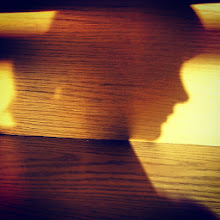in 500BC, it became customary to tie knots in strings.
rosary can be traced to the crusaders,
who adopted the practice of using beads from the arabs,
who may have borrowed it from india.
---
prayer beads ~
- offer a focus point, a way of keeping the mind still while praying
- provide an "anchor," something solid to hold onto
- allow prayer to be physical, or kin-esthetic, as well as mental and vocal
- keep us in touch with traditions, and unites the many different religions
in a high-speed world, slowly and carefully recited prayer, calms the body, mind, and soul.

---
european researchers has found that repeating "ave maria" is good for one's body.
also, reciting the latin "hail mary" prayer slows breathing and improves heart health.
prayers have evolved to fit the rhythm of the breath.
humans have rhythmic fluctuations in their circulatory system; 10 second cycle, 6 times per minute.
both yoga and rosary cause people to breathe in precisely the same rhythm of
6 breaths per minute (as opposed to 14 for normal breathing).
in meditation; breath rate, metabolism, blood pressure and heart rate all decrease.
the state is marked by distinctive, slower brain waves.
this relaxation response can be deepened when the meditative phrase used
has some personal, religious significance.
slow, rhythmic breathing (6 breaths a minute) ~
- synchronizes internal heart-lung rhythms
- improves blood oxygen levels
- cardiovascular responsiveness
- benefits the lungs
- mobilizes heart muscles
- enables more exercise
- alleviates problems of stress
- opens the mind
---
catholic ~

the rosary is the catholic form of transcendental meditation
though. it does not have the following among catholics that it did 40 years ago.
the standard 5 or 15 decade prayer beads is called the rosary.
and if a strand has any other number of beads, it is called a chaplet.
one of the most common chaplets is the 10-bead ring or strand.
by shifting the 10-bead chaplet from finger to finger on one's hand,
one can easily count the 50-bead cycle.
"rosary" also refers to the prayer prayed with the prayer beads; one "prays the rosary".
to facilitate the counting or to mark off certain divisions of a devotion,
sets of beads, usually decades, are separated from each other by a larger bead
or sometimes by a medal or metal cross.
the number of beads on a chaplet, or rosary,
depends on the number of prayers making up each particular form of devotion;
a full rosary consists of 150 Hail Marys, 15 Our Fathers,
and 3-4 beads corresponding to introductory versicles and the "Glory be to the Father", etc.
such a "pair of beads" is generally worn by religious.
lay people commonly have beads representing a third part of the rosary.
the brigittine beads number 7 paters in honor of the sorrows and joys of the Blessed Virgin,
and 63 aves to commemorate the years of her life.
another Crown of Our Lady, in use among the Franciscans,
has 72 aves, based on another tradition of the Blessed Virgin's age.
the devotion of the Crown of Our Lord consists of 33 paters
in honor of the years of Our Lord on earth
and 5 aves in honor of His sacred wounds.
(here's a list of some prayers)
---
buddhist ~

(photo from here)
"prayer bead strings are used for counting mantras.
the usual mantra is 'om mani padme hum' which is one of the names of the Buddha.
(the literal translation is "jewel in the heart of the lotus".)
for each mantra uttered, the fingers advance one bead.
there are a total of 108 beads on each Buddhist prayer bead string.
repeating the name of the Buddha gains a person merit on the path to enlightenment.
visualize the 6 syllables of the mantra as a luminous wheel of light.
it turns and radiates rainbow rays of light which drive away evil,
filling you and all other beings with peace and bliss."
among the Buddhists, whose religion is of Brahminic origin,
various prayer-formulas are said or repeated with the aid of beads
made of wood, berries, coral, amber, or precious metals and stones.
a string of beads cut from the bones of some holy lama is especially valued.
the number of beads is usually 108;
but strings of 30-40 are in use among the poorer classes.
Buddhism in Burma, Tibet, China, and Japan alike
employs a number of more or less complicated forms of devotion,
but the frequently recurring conclusion, a form of salutation, is mostly the same,
and contains the mystic word "OM"
keys and trinkets are often attached to a buddhist's prayer beads,
and generally each string is provided with 2 little cords of special counters, 10 in number,
in the form of beads or metal disks.
at the end of one of these cords is found a miniature thunderbolt;
the other terminates in a tiny bell.
with the aid of this device the devotee can count a hundred repetitions of his beads
or 108 x 10 x 10 formulas in all.
---
muslim ~

(photo from here)
strung in 33 or 99 bead strands,
to pray the 99 names of Allah.
or
divided into 3 equal parts (by either a bead, special shape/size, gold tassel, or silk thread)
for prayer of the Tasbih:
- 33 times: "Subhana-llah" (Glory be to Allah),
- 33 times: "Alhamdu-li-llah" (Praise be to Allah)
- 33 times: "Allahu akhbar" (Allah is great)
---
hindu prayer beads have 109 beads
for the 108 names of God,
and one to mark the beginning of the prayer cycle.
---
snips from wiki, and:
http://www.viarosa.com/VR_AboutPrayerBeads.html
http://www.resurrectionhingham.org/rosary.htm
http://sonyaandtravis.com/sera-monastery-lhasa-tibet-debating-monks/
http://www.amazon.com/Muslim-Prayer-Brazzaville-Africa-Stretched/dp/B005MUDBJ0
http://www.moonsinger.com/prayer-beads.html





No comments:
Post a Comment